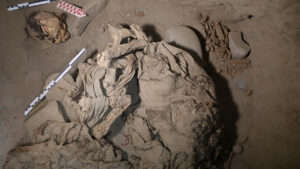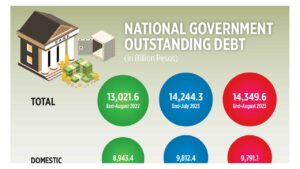Tales of recovery and remorse from Marawi City

By John M. Unson, Correspondent
IT HAS been six years since terrorists laid siege to Marawi City, which led to a five-month fierce battle with government forces that ruined centuries-old villages of the Maranaos, who to this day continue to reel from the physical and emotional devastation wrought by a group’s “religious adventurism.”
Gov. Mamintal A. Adiong, Jr. of Lanao del Sur province, where Marawi is the capital, said while there have been significant accomplishments in the rebuilding efforts, it is still a long journey to full recovery.
“It may still take time for the local communities to fully bounce back from its adverse effects,” he said on Wednesday.
Apart from Marawi City, Lanao del Sur covers 39 municipalities — one of which is Butig, hometown of the slain siblings Omarkhayam Romato Maute and Abdullah Romato Maute, founders of the Maute terror group.
Inspired by the Islamic State of Iraq and Syria, the duo and their followers attempted to take over Marawi City as part of a plot to establish a puritan Islamic community in the area, one that they had said would be “liberated” from non-Muslims.
Halima K. Mansur, a widow with three grade school children, said they returned in late 2018 to their home in Barangay Marinaut, one of the villages that the Maute group occupied. But many of their relatives in other areas are still in different towns nearby since their barangays have yet to be fully rebuilt as promised by the previous administration under former President Rodrigo R. Duterte.
They feel frustration after six years of displacement but are keeping faith in the government now under President Ferdinand R. Marcos, Jr.
“We know that the new administration is focusing attention on the problem. The hostilities in Marawi City happened during the time of the past administration,” Ms. Mansur said in Filipino with her Maranao accent.
Another resident, fruit vendor Muntas G. Saripada, said life for him and his family is back to normal after they have resettled in Barangay Daguduban, where many houses were damaged by explosives and artillery blasts, or burned down by terrorists at the height of the Marawi City siege.
BANGSAMORO PEACEMr. Adiong, also chairperson of the Lanao del Sur provincial peace and order council, said the city’s recovery has also received extensive support from the new Bangsamoro Autonomous Region in Muslim Mindanao (BARMM) government.
He said the establishment of a new Bangsamoro region, founded on a peace agreement and formalized via a plebiscite in early 2019, has helped them address the consequential problems caused by the Maute group.
Mr. Adiong said he is thankful for the peace and security interventions and capacity-building programs of the BARMM’s Ministry of the Interior and Local Government (MILG).
The regional programs, he said, support the peace and security efforts of local government units in Lanao del Sur, which are essential to their Marawi City rehabilitation thrusts.
“These efforts by the MILG-BARMM complement our initiative to rebuild Marawi City and help strengthen peace and security outside (the city), which is necessary in putting an end to violent extremism,” he said.
“We are thankful too to the Islamic communities in Lanao del Sur for supporting these efforts,” he added.
The MILG-BARMM’s peace program is tied with socio-economic projects such as the construction of more than a dozen municipal and barangay halls and public market buildings the province, some in former bastions of local terrorists who have been driven away or reformed through community peace-building programs and tactical maneuvers by the police and the military in recent years.
“These buildings are strong edifices of governance and when people see such icons of government, they will adhere to the rule of law,” Mr. Adiong said.
The Lanao del Sur provincial government and units of the Army’s 103rd Infantry Brigade and the BARMM Police Regional Office had secured the surrender in the past 12 months, via backchannel dialogues, of 93 members of the Dawlah Islamiya, another group also operating in the fashion of ISIS.
Many of the Dawlah Islamiya surrenderees were former members of the Maute group that got disbanded after their two top leaders were killed by pursuing security forces on Oct. 15, 2017, a day before Malacañang declared Marawi City “liberated from the terrorists.”
Two of those who surrendered, Amerodin S. Bansil and Samaon M. Mokiendi, had relocated to a seaside town in Lanao del Sur, where they are jointly propagating corn in a rented land owned by relatives.
They had expressed remorse over joining the Maute group, which they trace to “brainwashing” by radical Muslim preachers.
“If I am to be born again, I want to become a moderate ustadz (preacher) so I can preach to people that in Islam there is no such thing as violent extremism,” Mr. Bansil said.
“That our religion is all about respect for other religions, universal love, fraternalism, absolute patience and care for mankind,” he said.




